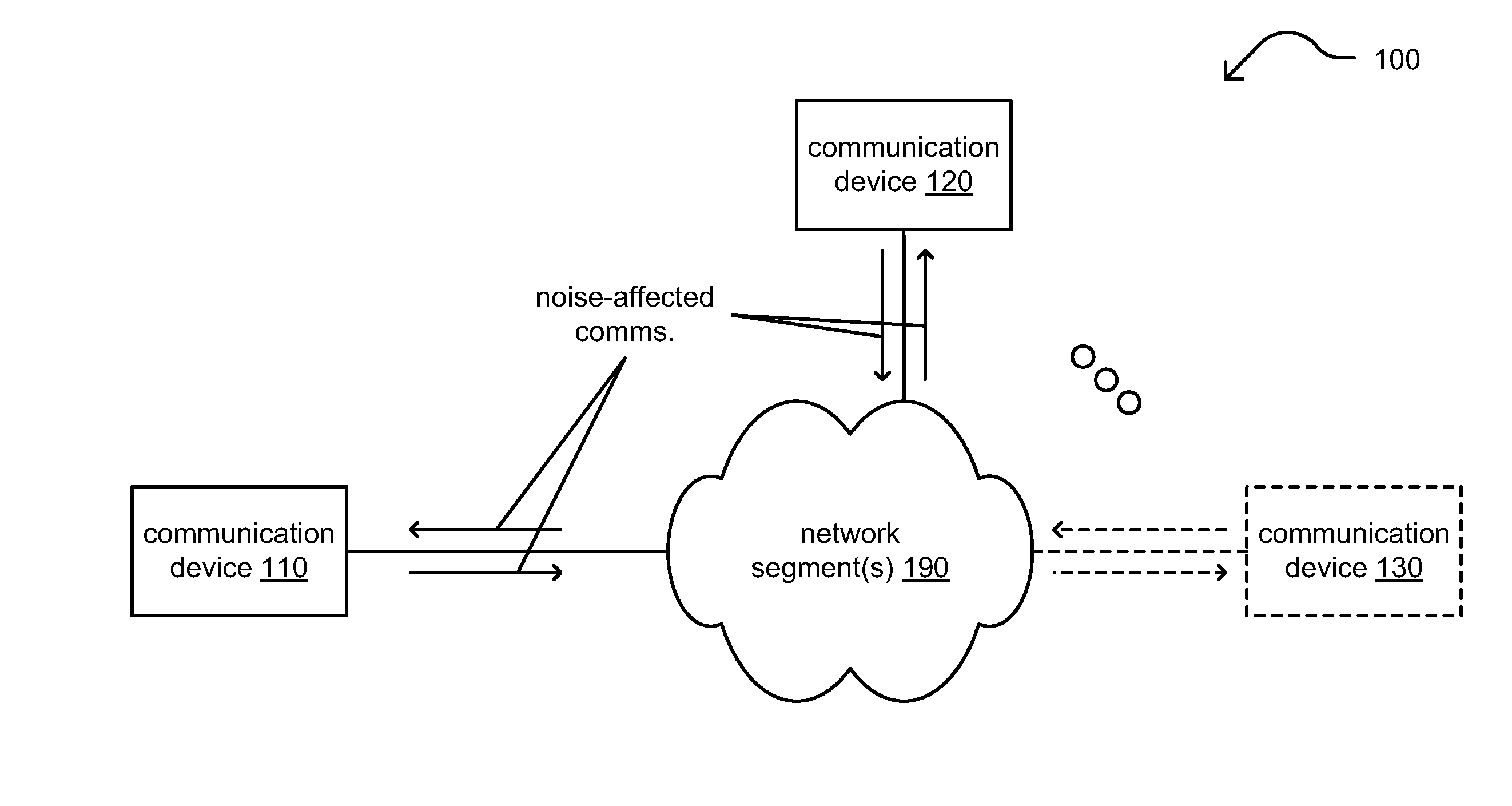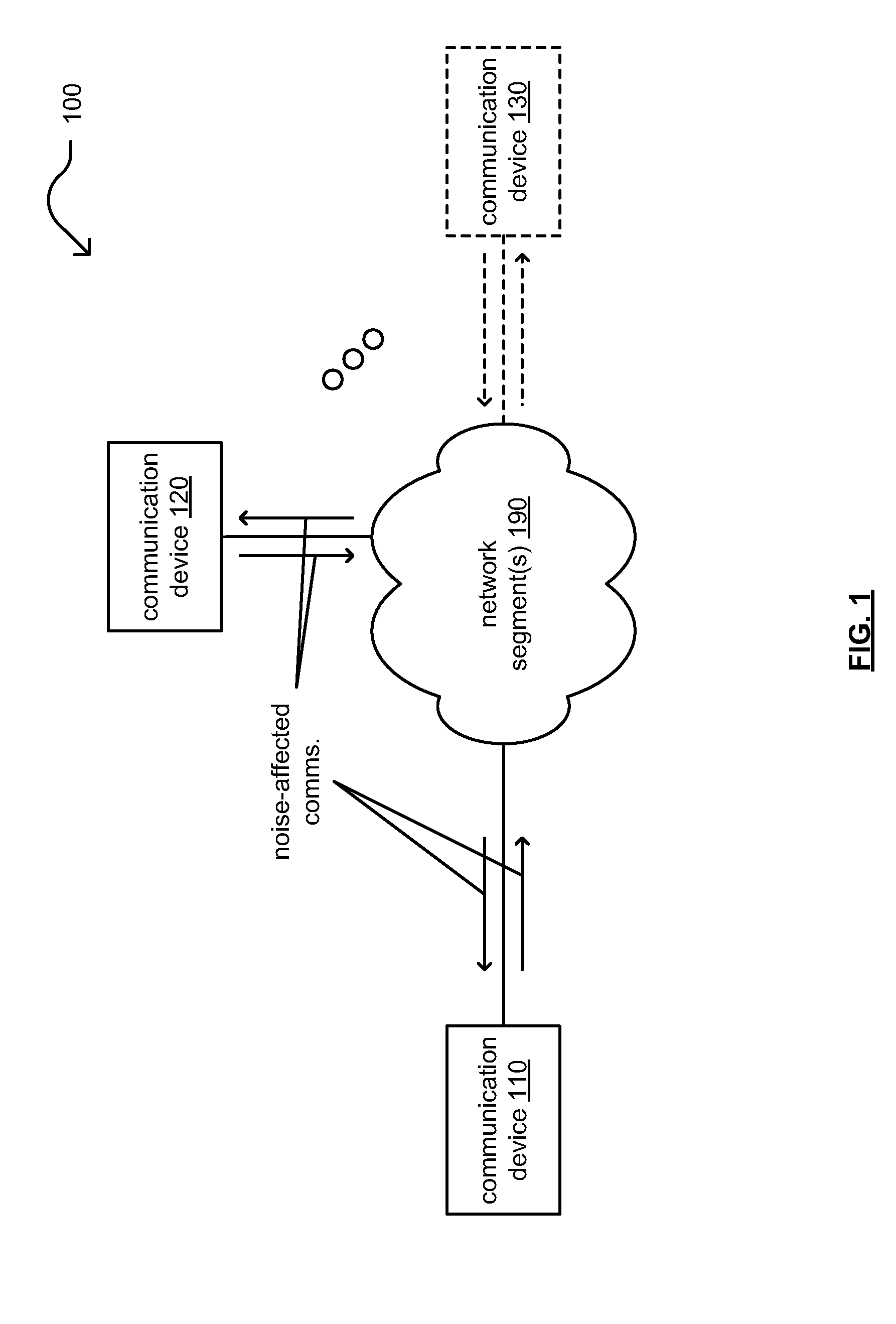Adaptive decoding based on signal to noise ratio (SNR)
a signal to noise ratio and adaptive decoding technology, applied in the field of communication systems, can solve problems such as interference and noise, degraded or even complete failure of communication, degraded or corrupted interfaces and connectors,
- Summary
- Abstract
- Description
- Claims
- Application Information
AI Technical Summary
Benefits of technology
Problems solved by technology
Method used
Image
Examples
Embodiment Construction
[0022]FIG. 1 is a diagram illustrating an embodiment 100 of one or more communication systems. One or more network segments 190 provide communication inter-connectivity for at least two communication devices 110 and 120. Examples of network segments 190 can include any one or more of a local area network (LAN), a wide area network (WAN), a wireless local area network (WLAN), a public switched telephone network (PSTN), the Internet, a cellular communication network, etc. Generally speaking, any desired number of communication devices are included within one or more communication systems (e.g., as shown by communication device 130). Some or all the various communication devices 110-130 include capability to operate using forward error correction (FEC) and / or error correction code (ECC) as described herein.
[0023]The various communication infrastructure within the one or more network segments 190 may be implemented using any of a variety of communication media including communication li...
PUM
 Login to View More
Login to View More Abstract
Description
Claims
Application Information
 Login to View More
Login to View More - R&D
- Intellectual Property
- Life Sciences
- Materials
- Tech Scout
- Unparalleled Data Quality
- Higher Quality Content
- 60% Fewer Hallucinations
Browse by: Latest US Patents, China's latest patents, Technical Efficacy Thesaurus, Application Domain, Technology Topic, Popular Technical Reports.
© 2025 PatSnap. All rights reserved.Legal|Privacy policy|Modern Slavery Act Transparency Statement|Sitemap|About US| Contact US: help@patsnap.com



